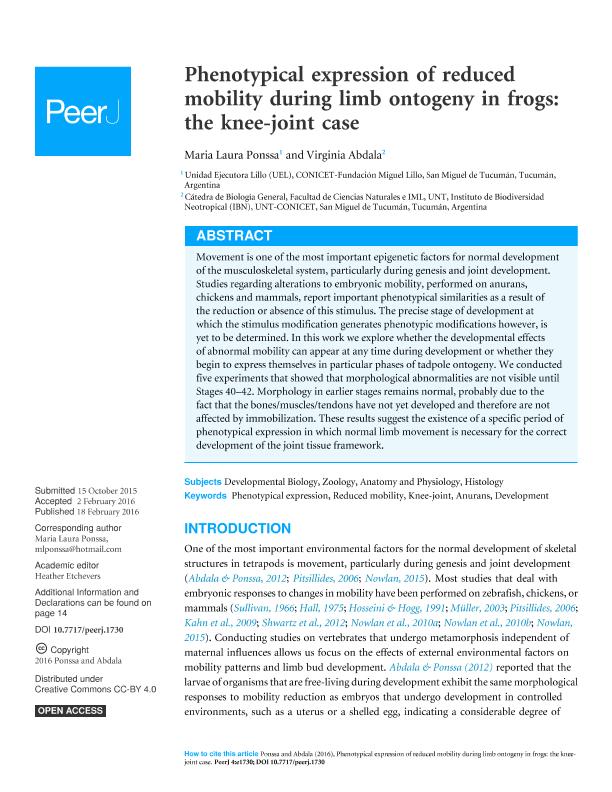Artículo
Phenotypical expression of reduced mobility during limb ontogeny in frogs: The knee-joint case
Fecha de publicación:
03/2016
Editorial:
PeerJ Inc.
Revista:
PeerJ
ISSN:
2167-8359
Idioma:
Inglés
Tipo de recurso:
Artículo publicado
Clasificación temática:
Resumen
Movement is one of the most important epigenetic factors for normal development of the musculoskeletal system, particularly during genesis and joint development. Studies regarding alterations to embryonic mobility, performed on anurans, chickens and mammals, report important phenotypical similarities as a result of the reduction or absence of this stimulus. The precise stage of development at which the stimulus modification generates phenotypic modifications however, is yet to be determined. In this work we explore whether the developmental effects of abnormal mobility can appear at any time during development or whether they begin to express themselves in particular phases of tadpole ontogeny. We conducted five experiments that showed that morphological abnormalities are not visible until Stages 40-42. Morphology in earlier stages remains normal, probably due to the fact that the bones/muscles/tendons have not yet developed and therefore are not affected by immobilization. These results suggest the existence of a specific period of phenotypical expression in which normal limb movement is necessary for the correct development of the joint tissue framework.
Palabras clave:
Anurans
,
Development
,
Knee-Joint
,
Phenotypical Expression
,
Reduced Mobility
Archivos asociados
Licencia
Identificadores
Colecciones
Articulos(UEL)
Articulos de UNIDAD EJECUTORA LILLO
Articulos de UNIDAD EJECUTORA LILLO
Citación
Ponssa, María Laura; Abdala, Virginia Sara Luz; Phenotypical expression of reduced mobility during limb ontogeny in frogs: The knee-joint case; PeerJ Inc.; PeerJ; 2016; 2; 3-2016; 1-18
Compartir
Altmétricas




